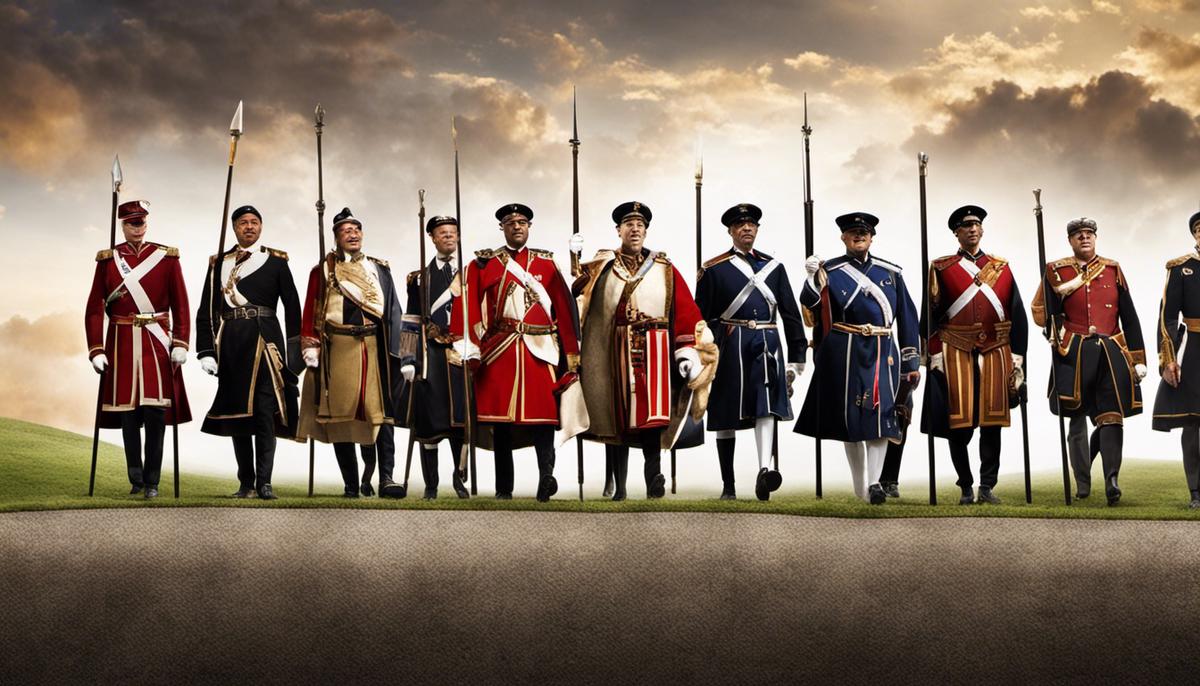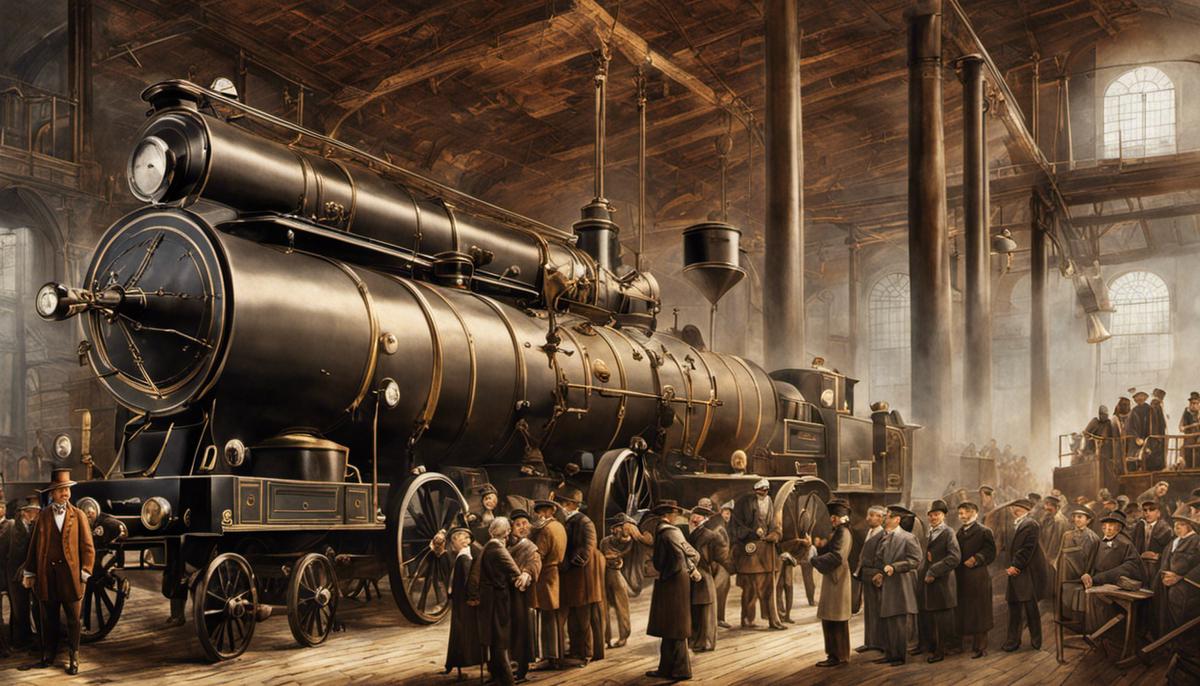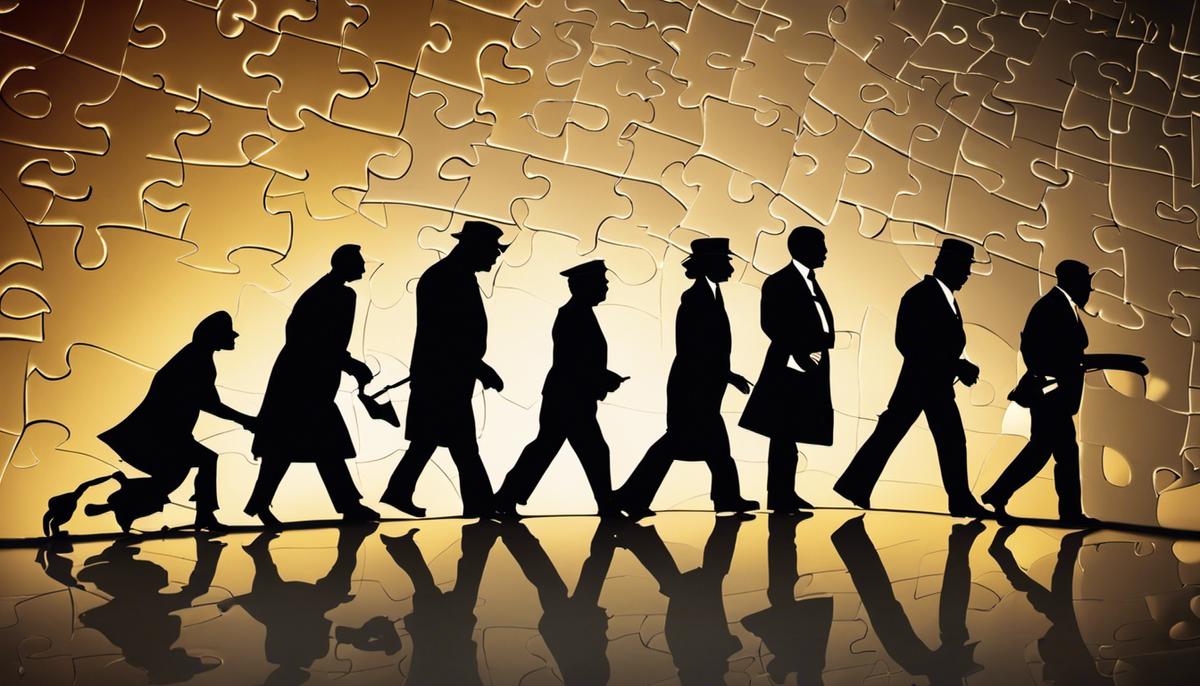In every stride of human evolution and societal development, the concept of leadership is a common thread distilling the essence of these steps into actionable, coherent sequences. Embarking on the fascinating journey of leadership’s history, an fascinating tapestry unravels, painting a portrait of how notions of power, responsibility, and command have transmogrified through the ages. From the ancient civilizations that formed the cradle of leadership ideologies, through the sweeping changes enacted during the Industrial Revolution, to the maturing vision of leadership amid the torrents of modernity, the tale is fascinating. The narrative continues into the unseen future, providing a speculative lens to navigate the nature of tomorrow’s leadership in an age of technology, ethics, and globalization.
Ancient Leadership Concepts
A thrilling dive into the annals of history reveals a plethora of leadership styles and concepts that were birthed from the cradle of ancient civilizations. This exploration facilitates a comprehensive understanding of leadership styles among today’s managers and executives, as well as the core values that guide their decision-making processes.
First, we’ll journey back millennia to ancient Egypt, where we find the quintessential embodiment of autocratic leadership in the Pharaohs. These monarchs wielded absolute authority, with their subjects often regarding them as deities. It was their sacred duty to steer their civilization toward prosperity and ward off chaos.
In this centralized style of leadership, orders come from the top, streamlining decision-making processes. Modern-day CEOs may not command divine reverence, but there may still be a place for this “command-and-control” style in situations that require decisiveness and quick action.
Leaping to ancient China, we encounter the philosophical principles of Confucianism. Under this school of thought, leaders pursue righteousness over profit and personify virtues that their followers would then seek to emulate. This servant-leadership paradigm debunks the myth that leaders must be dictatorial. Corporate leaders today can value this ideology by putting employees first, fostering a supportive culture that encourages growth and development.
Turning our attention to the Grecian golden age, we uncover democratic leadership. Athenians practiced a democratic system where free men participated in lawmaking. Managers choosing this style typically garner feedback from their team to reach consensus on decision making. While this style can slow down the decision-making process, it often breeds creativity, drives engagement, and strengthens company culture.
Finally, discover the transformative leadership style in the ancient Roman Empire. Roman leaders sought to instill vision and inspire their followers to transcend their personal interests for the public good. This style requires leaders to become role models, driving change while showcasing resilience and integrity. Modern executives can apply this style to promote innovation, improve productivity, and gain the loyalty of their team.
As we analyze these ancient leadership styles, one thing is clear: there is no “one-size-fits-all” method to leadership. The underlying ethos is that successful leaders adapt to their unique circumstances and inspire others to push the boundaries of success, akin to the great leaders of antiquity. In today’s fast-paced business world, understanding these leadership styles and the ability to fluidly shift among them could give organizations that much-needed edge.
The adage, “those who cannot remember the past are condemned to repeat it,” rings particularly true in the realm of leadership. Acknowledging the merits and shortcomings of these ancient leadership styles can facilitate a clearer pathway – one that fosters better decision-making, motivates employees, and ultimately sets forth on a trajectory towards exponential growth and prosperity. But just as innovation has always been a key driver in business, so must we continue to evolve and redefine leadership for the modern age. There is always room for a new chapter to be written in the annals of leadership history.

Leadership During Industrial Revolution
The Evolution of Leadership During the Industrial Revolution: A Catalyst Towards Change
During the Industrial Revolution in the 18th and 19th centuries, the business landscape underwent a metamorphosis, paving the way for monumental shifts in leadership styles. Revamping the societal, economic, and management structures, this epoch grappled with the autocratic leadership of the past and embraced a transformation towards a more receptive and flexible leadership style.
Before the Industrial Revolution, leadership generally revolved around absolute control and submission, mirroring the societal structures of the monarchies and theocracies of those times. However, as the Industrial Revolution propelled the world toward a new era of accelerated changes, leaders had to innovate and adapt. Stagnation in leadership methodology would have meant a fast and merciless decline in an increasingly competitive landscape.
As industries sprang up and businesses expanded, needs for new managerial styles surfaced. Scientific management or Taylorism, pioneered by Frederick Winslow Taylor, took the limelight during this time. It called for a scientific approach to work, maximizing efficiency through job simplification and worker training. With its focus on operational and manual workers, rather than management, this approach marked a significant departure from previous forms of leadership.
Leadership during the Industrial Revolution also leaned towards a bureaucratic model, as exemplified by Max Weber. This approach highlighted the importance of a clear hierarchy, job specialization, and formal rules and procedures. Beyond transactional approaches, these bureaucracies emphasized discipline, reliability, and predictability, hallmarks of a budding industrial era.
Encased with these trends was a gradual shift from task-oriented to people-oriented leadership. The rise of Human Relations Theory, led by Elton Mayo, underscored the importance of workers’ social needs and the positive impact of their fulfillment on productivity. This marked the dawn of more liberal leadership styles, sowing seeds towards more democratic and participative forms of management.
Despite these crucial strides, let’s not romanticize the leadership landscape during the Industrial Revolution entirely. Exploitation and unfair labor practices were prevalent, reiterating that the path to progressive leadership was paved with its share of roadblocks and potholes. Nevertheless, the leadership evolution during this period laid the groundwork for a continuous journey towards more ethical, humane, and fair practices.
Innovation and willingness to adapt were, without a doubt, the core elements that defined leadership during the Industrial Revolution. The era was rife with disruptions and creativity inspired by the transformative power of leadership. These historical insights offer invaluable lessons to today’s leaders, reinforcing the need for continuous evolution and adaptability to steer their organizations effectively within the fast-paced world of business disruption.
Through this lens, a comprehensive study of leadership evolution during the Industrial Revolution can provide invaluable guidance to modern-day leaders. By acknowledging the past’s triumphs and shortcomings, leaders can glean insights into the importance of adaptability, empathy, rationality, and innovation. Balancing these facets will ultimately strengthen their acumen and stand the test of time, much like the strong leaders of the Industrial Revolution.

Leadership in a Modern Era
Defining Core Qualities of Today’s Leadership: Agile, Inclusive, and Data-Driven
Pivoting from our discussion on Industrial Revolution leadership, we now tread onto the cutting-edge epoch of modern leadership. By essence, contemporary leadership is a dynamic mix of diverse skills and strategies, curated from societies advanced and ancient, yet tailored with a modern touch to face today’s rapidly changing business landscape.
In today’s corporate world, agility reigns supreme. Dynamic environments and fast-paced advancements require leaders with an agile mindset, capable of pivoting strategies and receptive to change. In the silicon valleys and tech hubs of the world, the Agile leadership style is celebrated for its iterative nature and response to fluctuating markets. Agile leaders, unafraid to test new waters, often cultivate a fail-fast-fail-forward culture, encouraging innovation and resilience among their teams.
While agility is a critical trait in modern leaders, inclusivity, and diversity have become equally significant cornerstones. A far cry from centralized leadership, today’s successful leaders understand the value of including a multitude of perspectives in decision-making processes. A diverse and inclusive leadership catalyzes innovation, increases problem-solving competence and promotes a stronger alliance within the workforce. Companies with diverse leadership have shown to outperform their competitors, highlighting the importance of shattering the glass ceiling and ensuring equal representation at all levels of leadership.
The fastidious selection of leadership styles alone does not ensure success in the contemporary business world. Data analytics has infiltrated the repertoire of corporate decision-making, ushering in a new era of data-driven leadership. Armed with actionable insights, leaders can make informed decisions, predict trends, and mitigate risks with veritable confidence. Data-driven leaders can navigate through the foggy landscapes of market complexities, creating a valuable competitive edge.
Today’s great leaders also understand the power of emotional intelligence. In an era where AI and automation are swiftly taking over cold data-crunching and task-oriented roles, leaders who can empathize, communicate effectively, and connect on a human level have emerged as the true trailblazers. This emotional connection fosters trust and mutual respect between leaders and their teams, driving workforce engagement to impressive heights.
Furthermore, contemporary leadership has sieved through the rigid hierarchies of old, instating a flattened, more democratic leadership structure. Leaders are now expected to be mentors who listen, guide, and empower, rather than commanding micro-managers. This leadership style bolsters autonomy, encouraging employees to take ownership of their tasks, which in turn boosts productivity and job satisfaction.
In conclusion, contemporary leadership is undoubtedly a powerful alloy of agility, inclusiveness, data-analytical skills, emotional intelligence, and a democratic ethos – all spun together in a robust and resilient 21st-century thread. These qualities, nurtured within the right organizational structure, will define the leaders of tomorrow – leaders adept at leading the charge through the undefined terrains of the business future.

Future of Leadership
“`htmlAs the progression of leadership continues to evolve and transform, outstanding traits such as agility have established themselves as paramount for contemporary and future leaders. Much like the cheetah, known for its unparalleled speed and adaptability, leaders in the modern era are required to quickly respond to the rapidly changing business environment. Agility plays a pivotal role in managing crises and outmaneuvering the competition while staying attuned to advancements occurring across multifaceted sectors.
In the age of globalization, inclusivity and diversity stand as significant pillars in the leadership structure. Diverse teams offer a rich source of innovative ideas and diverse perspectives that can drive growth, competitiveness, and success. Forward-thinking leaders recognize the intrinsic value of individuality and strive to build a leadership pipeline that mirrors the multicultural, multifaceted world we live in.
As we harness the power of the digital revolution, the ubiquitousness of data analytics is reshaping leadership like never before. Data-driven approaches to decision-making boost efficiency, reduce risk, and provide valuable insights. The mastery of these data tools and techniques is no longer a luxury, but a prerequisite for modern and future leaders.
In addition to embracing technological advancements, leaders now perceive emotional intelligence as a cornerstone of effective leadership. Exceptional leaders are not just smart or strategic; they are emotionally intelligent. They are proficient in understanding and managing their emotions and adept at identifying, interpreting, and responding to the emotions of others. Emotional intelligence contributes to more productive communication, improved collaboration, and a more genuinely engaged workforce.
Gone are the days when organizations were a pyramid of hierarchies, with top-down communication being the norm. The tide has turned towards a more democratic leadership structure, resembling more a circle than a pyramid. This flattened structure promotes transparency, trust, and a culture of shared responsibility, thereby increasing employee engagement and boosting morale.
In conclusion, contemporary leadership is not an end state but rather an ongoing evolution. The leaders of tomorrow will be those who are agile, data-savvy, and emotionally intelligent, those who champion the causes of diversity and shared decision-making. As the business landscape continues to change, so too must our leaders evolve, shaping and being shaped by the undulating contours of commerce.
“`
Delving into leadership’s historical dimensions and the repercussions of its past, present, and potential evolution raises invaluable insights for modern professionals. By understanding the legacy of ancient leadership styles, the metamorphosis during the Industrial Revolution, and the redefined paradigms of current leadership, contemporary leaders can garner fundamental insightful and retrospect. Simultaneously, they can gaze into the future, preemptively equip themselves for leadership in the age of AI, ethical imperatives, and global integration. As our odyssey into the history and the future of leadership demonstrate, it’s a perpetual process that shapes and is shaped by changing contexts, a continuum that remains integral to our collective progress and development.